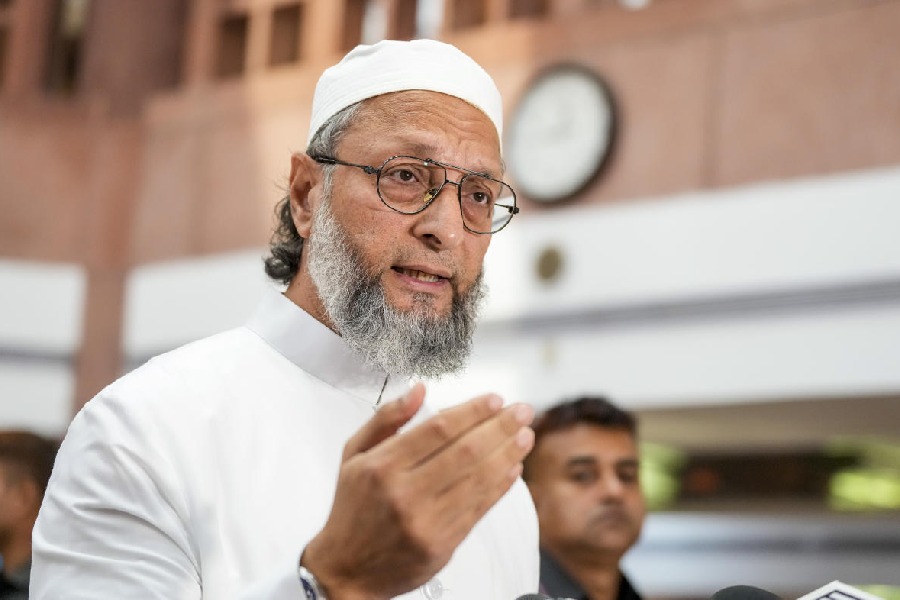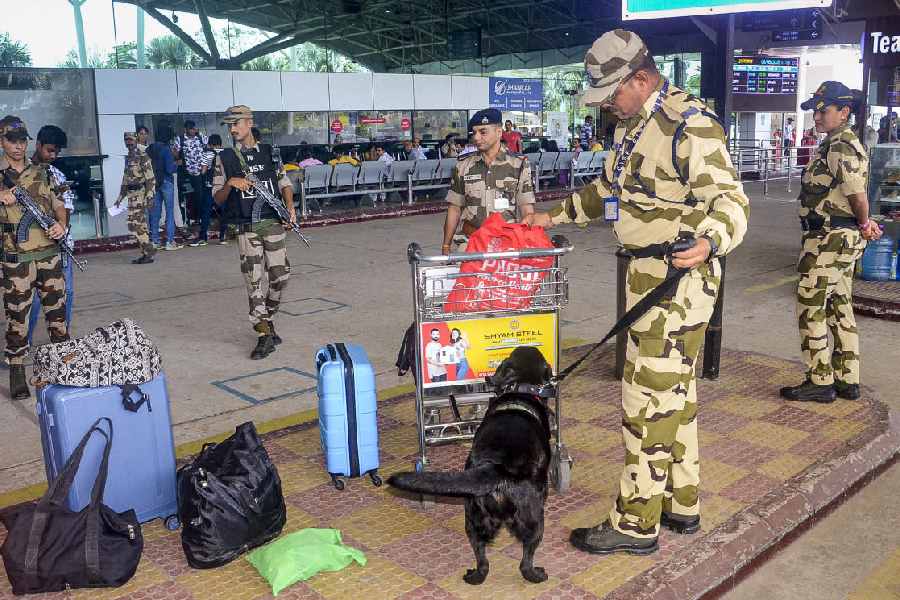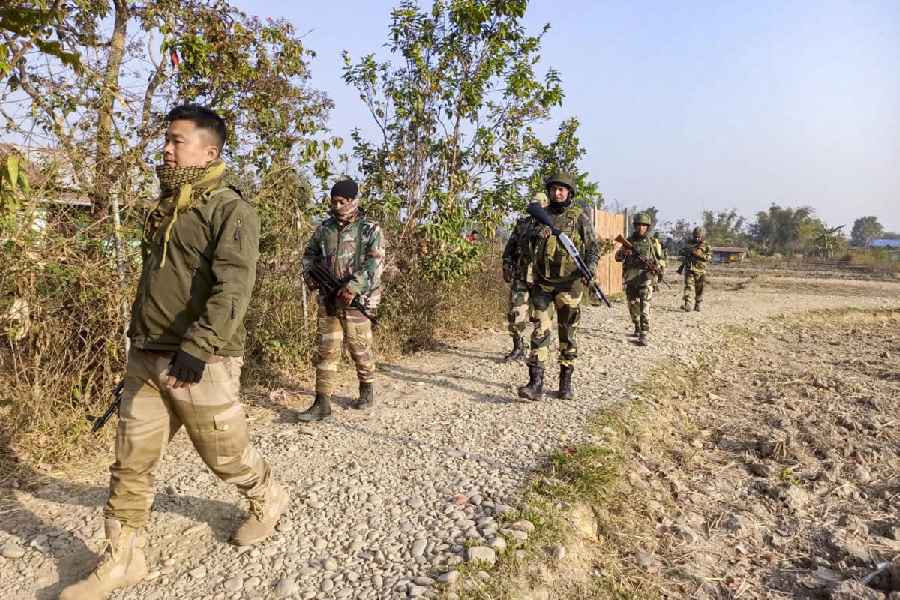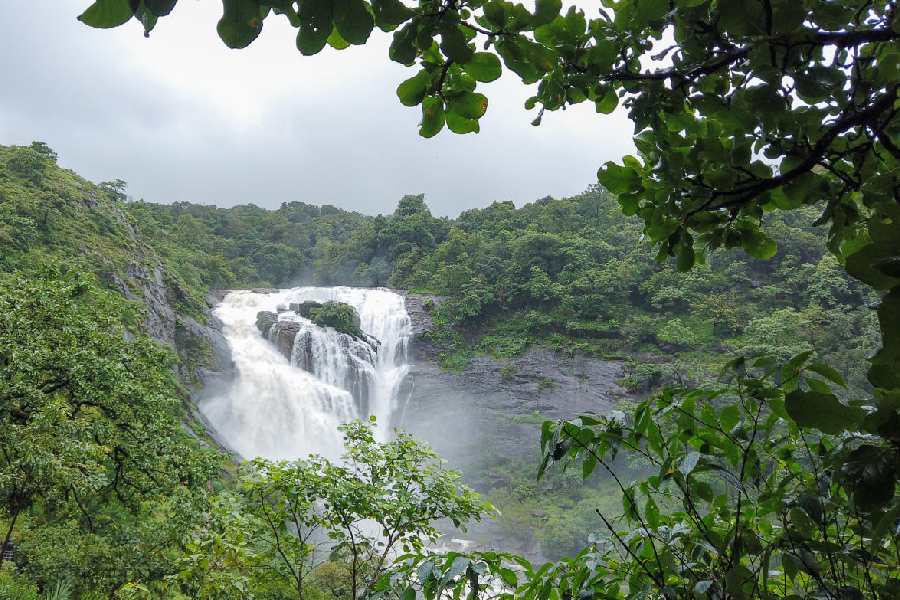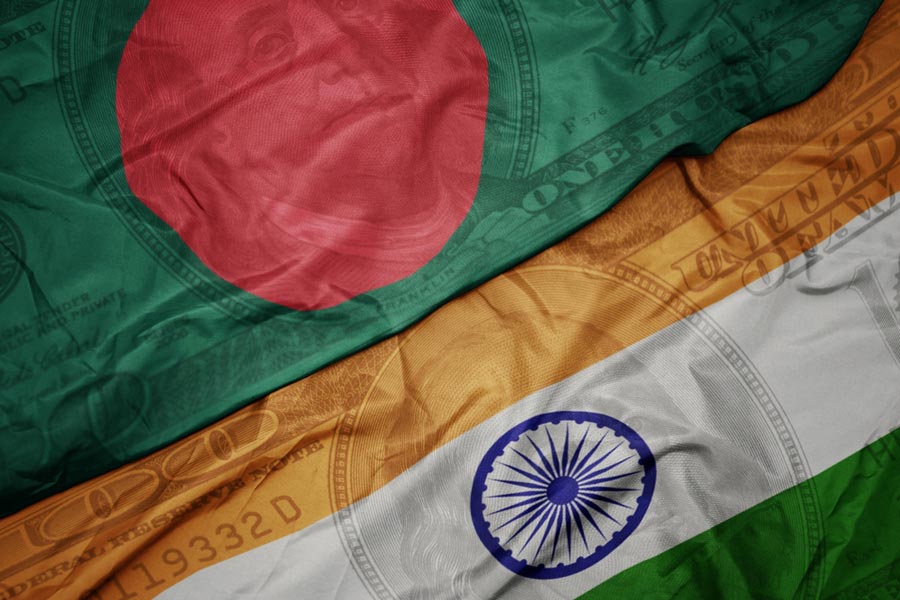 |
 |
 |
.jpg) |
 |
.jpg) |
 |
| (From top): Aisaneswar temple; water tank at Uttareswar temple; an idol of Lord Ganesh at Yamuneswar temple; Champakeswar temple; culpture at Yamuneswar temple; a Shiva lingam at Budha Deula and Gangeswar shrine. Pictures by Ashwinee Pati |
Bhubaneswar, July 25: Tourists will be mistaken if they are under the impression that the Konark Sun temple and the Puri Jagannath temple are Orissa’s only famous shrines.
The sheer beauty and the historical significance of Lingaraj, Mukteswar, Rajarani, Kedar-Gouri and Parsurameswara temples in the Old Town area of the capital can leave tourists spellbound. There is a staggering number of 199 lesser-known monuments with interesting stories to tell.
From tourists to students of history, archaeology conservation and architecture, these monuments hold value for all.
Uttareswara is situated near the entrance of Bindusagar Lake. People of the state believe that the gods play water sports here. Before the rath yatra of Lord Lingaraj on Ashokastami, Lord Lingaraj, Jagannath and Kapileswar are taken in a decorated boat on Bindusagar Lake. There is also a pond called Godavari Kunda near Uttareswara and legend goes that taking a dip in it equals a trip to Godavari.
Dhireswar, a temple dating back to the late 8th century AD is also situated near this complex. Former state archaeologist Bijay Kumar Rath said: “The summer sports are organised near Uttareswara, while the annual rituals such as tonsuring of heads is done on the south-eastern and southern parts of the lake.’’
While the deity in Kapali Math is considered as the elder brother of Lord Lingaraj, the deity in Bharati Math, Kamakshi is considered his sister. On Yama Dutia and the Siva Chaturthi, it is believed that Lord Lingaraj comes here to have lunch with his sister,’’ Rath said.
“The math was perhaps the only double-storeyed structure in the 18th century in the entire Old Town area. It also held huge property that is now managed by the endowment board,’’ Rath said.
According to ancient scriptures, Orissa was divided into five religious regions. While Shaktikshetra was found around Biraja temple in Jajpur, Ekamrakshetra was found around Bhubaneswar, Srikshetra in Puri, Arkakshetra in Konark and Ganapati Kshetra around Chandikhole. Lingaraj was earlier known as Krutibasa, Tribhubaneswara and Harihara. The present name Bhubaneswar came from the word Tribhubaneswar.
“The ancient scripts of 15th century AD suggest that the Ekamrakshetra was a tourist place in that time and after taking a holy dip at Ganga Sagar Mela, tourists had to visit the Shaivakshetra in Bhubaneswar on their way to Srikshetra Puri,’’ Rath said. “While there were 1,001 temples in the Old Town area, there are only 320 temples now. Of them, many are not visible due to new highrises around the temples,” Rath said.
“There are 199 unprotected and lesser-known structures, including temples and other monuments, in the area,’’ Rath added.
Prof. Sadasiba Pradhan, head of the postgraduate department of ancient indian history, culture and archaeology of Utkal University has documented the 199 monuments in a book published by the Indian National Trust for Art and Cultural Heritage (INTACH), Bhubaneswar chapter.
All the monuments are listed with their location, address, approach, tradition and legends, ownership, age and significance. Both Gangeswar and Yamuneswar temples are situated on either side of the Ganga-Yamuna road (leading from Talabazar Chowk to Ganga-Yamuna temple in the Old Town area 200 metres away from Lingaraj temple).
According to common belief, goddess Parvati killed the demons, Kirti and Basa in Ekamrakshetra. After the demons were killed, the deity felt thirsty. To quench his thirst, Lord Shiva struck his trident into the earth and a spring emerged giving birth to the stream that is near Yamuneswar temple. The 15th century grey sandstone structure of Yamuneswar has decorative statues of ‘nayika’ on its walls.
Aisaneswar is located near the blood bank of the municipal corporation hospital in the Old Town area called Sriram Nagar. It is about 10 metres from the western compound wall of Lingaraj temple. Rituals like Shivratri, Jalabhishek, Rudrabhishek and Sankranti are celebrated. Lord Lingaraj visits the 13th century shrine every year after the sixth day of Shivaratri.
Budha Deula comprises two Shiva lingams with circular yonipitha are found on the southern embankment of Bindusagar Lake behind Mohini temple. Around four small lingams are also found inbetween the two. Chief priest Lokanath Mishra said the images were recovered from the holy lake and placed there.
Pabaneswar situated at a distance of 100 metres of Parsurameswar temple on the left side of the road leading to the Kedar-Gouri temple. The present deity is a Shiva lingam with circular yonipitha.
Champakeswar, the Shiva temple is located in Ambika Sahi in the Old Town area, and about 175 metres west of Parsurameswar on the right side of the Kottitirtheswara lane leading to Bindusagar.
Residents believe that the Shiva lingam is patalaphuta, which means it rose naturally from the ground and is the precinct of the abode of Champa naga after whom the deity is named as Champakeswar.
It is a 13th century temple. Dologovinda-Vaidyanath temple is located near Rathagada Chowk and is mainly known as Vaidyanatha Shiva. The deity is perhaps so named on account of its proximity to the Dolamandapa situated across the road. It is a 15th century structure.
Retired diplomat Abasar Beuria said: “These lesser-known temples of varying dimensions offer a great variety of artistic and architectural significance of the Kalingan style.’’ INTACH convener S.K.B. Narayan said many structures are also affected by increasing footfall.
OLD GLORY
Place: Old Town, Bhubaneswar
Distance: 5km from Bhubaneswar railway station & 4km from Biju Patnaik Airport
Transport: Rented vehicles and autorickshaws
Where to stay: Orissa Tourism Development Corporation’s Pantha
Nivas, Jatri Nivas run by Bhubaneswar Municipal Corporation. There are also
several budget and luxury hotels


